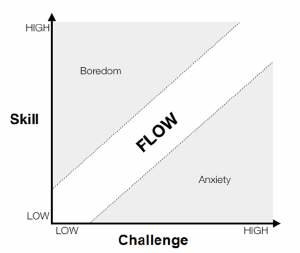Strategic Discomfort: How Embracing Challenges Accelerates Career Growth
Discover the power of stepping outside your comfort zone to propel your career forward. Learn how to identify growth opportunities and manage discomfort productively.
The Power of Strategic Discomfort
In the realm of career development, staying comfortable often equates to stagnation. While it’s tempting to remain in familiar roles and routines, real growth happens when you step into situations that stretch your abilities and push your boundaries.
This intentional seeking of discomfort is what I like to call "strategic discomfort." It’s a deliberate choice to put yourself in challenging situations where learning and growth are inevitable.
Understanding Optimal Challenge Zones
The concept of optimal challenge zones is rooted in psychology and refers to a sweet spot where tasks are neither too easy nor impossibly hard. This zone is where your skills are tested just enough to foster development without overwhelming you. Identifying these zones in your career involves assessing tasks or projects that are slightly beyond your current skill level but attainable with effort. For instance, if you're a software developer, tackling a project with a new programming language might be your optimal challenge.
This concept aligns perfectly with Mihaly Csikszentmihalyi's groundbreaking research on "flow state" in his book "Flow: The Psychology of Optimal Experience." Csikszentmihalyi describes flow as a state of complete immersion and energized focus that occurs when the challenge of a task matches your skill level. When challenges exceed skills, anxiety results; when skills exceed challenges, boredom sets in.
The career implications of Csikszentmihalyi's flow theory are profound. His research shows that people report their highest levels of happiness and satisfaction when operating in this optimal zone. For career growth, this means deliberately seeking projects that place you at the edge of your capabilities—where you're stretched but not snapped.
Csikszentmihalyi identified several conditions necessary for achieving flow that directly apply to career development:
Clear goals with immediate feedback
Balance between challenge and skill
Deep concentration on the task at hand
A sense of control and autonomy
Loss of self-consciousness and time distortion
An intrinsically rewarding experience
Finding your optimal challenge zone isn't just about skill acquisition—it's about creating conditions for deeper engagement and satisfaction in your work, which ultimately accelerates your career trajectory.
Examples of Beneficial Discomfort
Public speaking is a classic example of beneficial discomfort. Many professionals dread it, yet it’s a crucial skill for leadership roles. By volunteering to present at team meetings or industry conferences, you not only improve your communication skills but also enhance your confidence.
Leading new initiatives is another area where discomfort can be beneficial. When you take the lead on a project outside your expertise, you learn project management, cross-functional collaboration, and strategic planning. These experiences are invaluable in building a robust skill set.
Distinguishing Productive Discomfort from Burnout
While strategic discomfort is advantageous, it’s crucial to differentiate it from situations that lead to burnout. Productive discomfort should feel like a challenging workout—difficult but ultimately rewarding. Burnout, on the other hand, is characterized by chronic stress and fatigue.
To avoid burnout, set clear boundaries and ensure you have adequate support. Regularly assess your workload and stress levels, and don’t hesitate to seek help from mentors or colleagues when tasks feel overwhelming.
A Framework for Expanding Your Comfort Zone
Expanding your comfort zone doesn’t happen overnight. It requires a strategic approach. Start by setting small, manageable goals that require you to stretch. For example, if you aim to improve your networking skills, commit to attending one industry event per month.
Gradually increase the complexity of these goals. Once you’re comfortable with smaller challenges, take on larger tasks, such as leading a cross-departmental team or applying for a higher position. Reflect on each experience, noting what you learned and how you can apply these insights moving forward.
---
Are you ready to embrace strategic discomfort and propel your career forward? Start by identifying one area where you can challenge yourself this month and take action. Share your experiences and join the conversation in the comments below!
#career development #professional growth #comfort zone #challenge zones #burnout prevention


